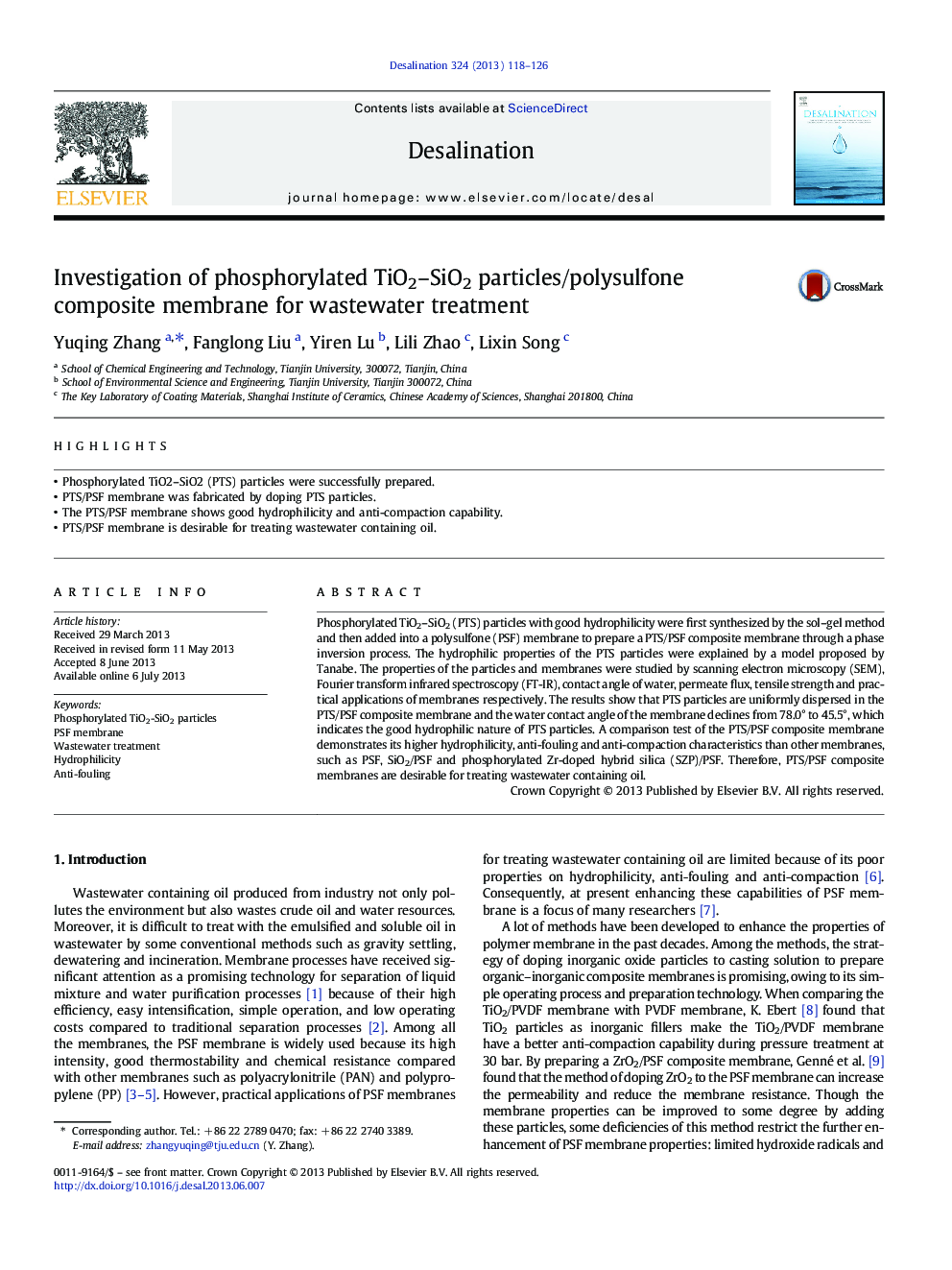| Article ID | Journal | Published Year | Pages | File Type |
|---|---|---|---|---|
| 7008672 | Desalination | 2013 | 9 Pages |
Abstract
Phosphorylated TiO2-SiO2 (PTS) particles with good hydrophilicity were first synthesized by the sol-gel method and then added into a polysulfone (PSF) membrane to prepare a PTS/PSF composite membrane through a phase inversion process. The hydrophilic properties of the PTS particles were explained by a model proposed by Tanabe. The properties of the particles and membranes were studied by scanning electron microscopy (SEM), Fourier transform infrared spectroscopy (FT-IR), contact angle of water, permeate flux, tensile strength and practical applications of membranes respectively. The results show that PTS particles are uniformly dispersed in the PTS/PSF composite membrane and the water contact angle of the membrane declines from 78.0° to 45.5°, which indicates the good hydrophilic nature of PTS particles. A comparison test of the PTS/PSF composite membrane demonstrates its higher hydrophilicity, anti-fouling and anti-compaction characteristics than other membranes, such as PSF, SiO2/PSF and phosphorylated Zr-doped hybrid silica (SZP)/PSF. Therefore, PTS/PSF composite membranes are desirable for treating wastewater containing oil.
Related Topics
Physical Sciences and Engineering
Chemical Engineering
Filtration and Separation
Authors
Yuqing Zhang, Fanglong Liu, Yiren Lu, Lili Zhao, Lixin Song,
